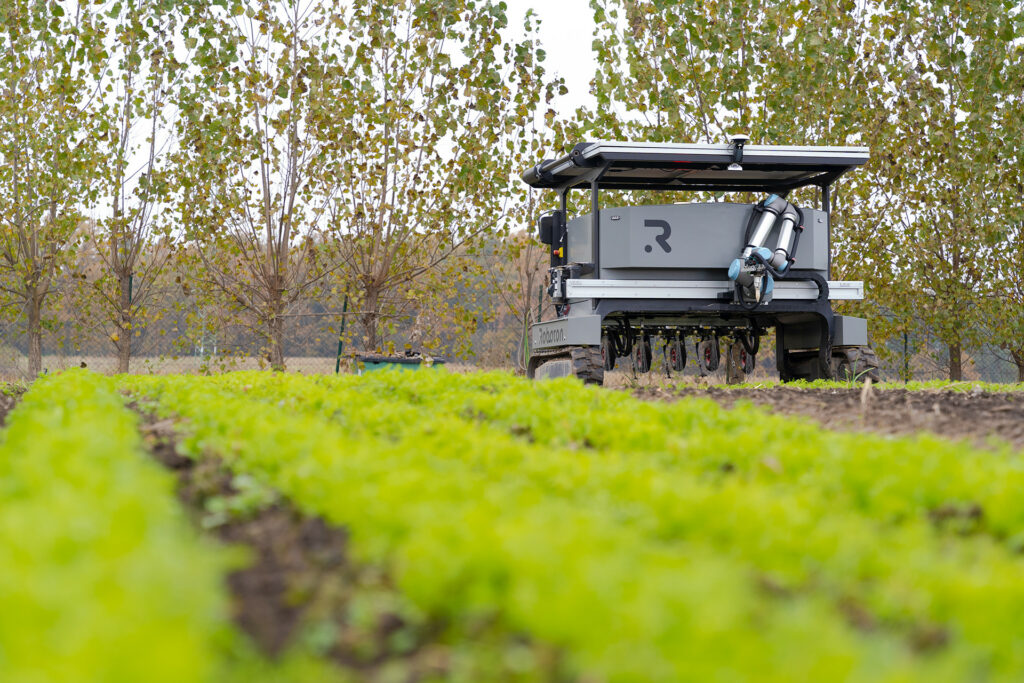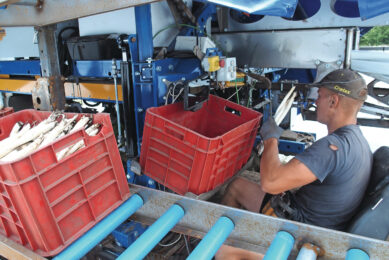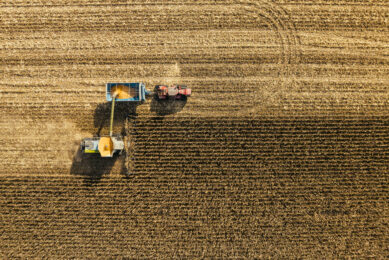Fully electric and autonomous robot from Roboton tackles multiple field tasks

Czech company Roboton has developed a fully electric, autonomous field robot designed for row crop production with minimal human intervention. The Roboton Farmer currently performs soil preparation, precision seeding, weeding, and targeted irrigation.
All operations are GPS-guided or vision-based, and the robot can operate continuously with high repeatability and low energy consumption. Roboton Farmer can handle more than one task per day. Based on the crop plan, it autonomously selects the required tool and switches it without human assistance. The Roboton Farmer uses a standardized 3-point hitch and smart connector interface, allowing it to switch between selected implements with minimal supervision.

When equipped with a UR (robotic arm), it can also manage carried tools for precision operations such as localised watering or weeding. Roboton Farmer monitors weed growth and reacts immediately when needed. It passes through the field regularly and mechanically weeds, so it uses no chemicals.
For trailed tools, the robot currently supports validated implements including cultivator blades, a rotavator, and wide-row seeders. Each implement is preconfigured in the system with task specific parameters. New implement types are under testing, and the list is being gradually expanded based on demand and compatibility.

Long hours without interruption
Thanks to solar panels, Roboton Farmer can operate for long hours without interruption. In addition, Roboton Farmer features fully automated charging and watering stations. It can autonomously dock to refill its water tanks for irrigation or to recharge its batteries via a grid-connected station, enabling multi-day unattended operation in the field.
The robot is built on a modular chassis that supports adaptation for various tools and missions. Key modules like powertrain, navigation, energy system, and task specific implements can be serviced or upgraded independently. This allows scaling the machine’s capabilities according to the farm’s evolving needs.

Roboton Farmer is equipped with a fully electric dual track drivetrain. Two independent rubber tracks deliver high traction and stability, enabling smooth turns and precise manoeuvring. This configuration significantly reduces ground pressure, which minimizes soil compaction and preserves soil structure, an essential factor in preventing erosion and maintaining long term field health. The track system also ensures reliable performance in soft, or uneven terrain.
The robot integrates a hybrid navigation system that combines dual RTK-GNSS for centimetre-level precision with machine vision and LIDAR-based obstacle detection. This setup enables safe, repeatable, and fully autonomous field operations. The robot can also be operated manually using a controller, a mobile app, or a web-based dashboard giving users flexibility for setup, transport, or assisted tasks.
Broader availability in 2026
When the GNSS signal is weak or disrupted , for example near forests or in harsh weather, the robot switches to visual odometry and AI-powered object detection for spatial orientation. This fallback mode is currently undergoing testing as a new feature to increase robustness in challenging environments.
Roboton Farmer is currently being piloted on two farms in the Czech Republic. The company expects broader availability in 2026, both for sale and as part of lease or service agreements, depending on the use case.
“Our initial focus is on the Central European market, but we’re open to discussions with partners and farmers from other regions, expansion to additional locations is possible based on mutual interest and deployment conditions”, says Chief Marketing Officer Michaela Slavíček at Roboton.
“We have received strong interest from research institutions, tech providers, and agri cooperatives who see potential in Roboton Farmer’s adaptability. Some are focused on extending its use to orchards or specialty crops and others are exploring integration with AI crop monitoring or renewable energy systems.”



